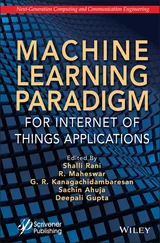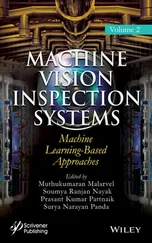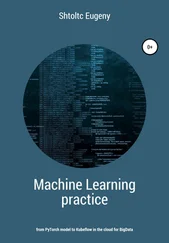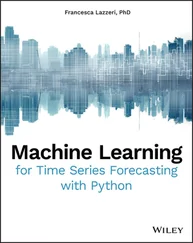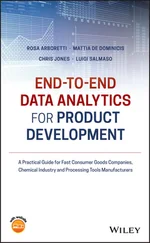4 Chapter 4 Figure 4.1 Technology evolution related to cloud computing [3]. Figure 4.2 Cloud characteristics. Figure 4.3 Cloud deployment model. Figure 4.4 Cloud service model.Figure 4.5 Business data growth over dimension.Figure 4.6 Key emergence trends.
5 Chapter 5Figure 5.1 Data life cycle.Figure 5.2 Problems related to data in rest, data in use, and data in transit.Figure 5.3 Advanced Encryption Standard (AES).Figure 5.4 AES encryption.Figure 5.5 AES decryption.Figure 5.6 Swapping of keys.
6 Chapter 6Figure 6.1 Comparison of algorithms.Figure 6.2 VPN configuration.Figure 6.3 Remote access VPN configuration.Figure 6.4 A network-to-network VPN configuration.Figure 6.5 A VPN tunnel and payload.Figure 6.6 A transaction with digital certificates.
7 Chapter 7Figure 7.1 Cryptography classification.Figure 7.2 Runtime for CRSA, Pallier HE, and RSA HE.Figure 7.3 Memory analyzer for CRSA, HE RSA, and HE PAILLIER.
8 Chapter 8Figure 8.1 Smart environment information system.Figure 8.2 Technologies in healthcare.Figure 8.3 Smart cities communication networks.Figure 8.4 Data storage processing.
9 Chapter 9Figure 9.1 Evolution of cloud [2].Figure 9.2 Simple DAG model.Figure 9.3 Mapping of tasks and virtual machines.Figure 9.4 Heuristic algorithms.Figure 9.5 DAG1 model with 10 tasks.Figure 9.6 Gantt chart for task allocation.Figure 9.7 Gantt chart for task allocation.Figure 9.8 DAG model with 10 tasks.Figure 9.9 Gantt chart for task allocation.Figure 9.10 Gantt chart for task allocation.Figure 9.11 DAG 2model with 15 tasks.Figure 9.12 Scheduling length.Figure 9.13 Speedup.Figure 9.14 Efficiency.Figure 9.15 SLR.Figure 9.16 Resource utilization.Figure 9.17 Cost.
10 Chapter 10Figure 10.1 Architecture of Internet of Things.Figure 10.2 Relation between IoT, cloud, and environment monitoring.Figure 10.3 Interoperability in IoT.Figure 10.4 Generic MapReduce application execution phases.Figure 10.5 Applications of smart environment.Figure 10.6 Conceptual diagram of IoT healthcare solutions [121].
11 Chapter 11Figure 11.1 Clustering process used in the body for data transmission [1].Figure 11.2 Image segmentation using UNet architecture [2, 18].Figure 11.3 Role of cloud computing in the field of body area network [9, 20].Figure 11.4 Tier health IoT architecture [27].Figure 11.5 Modern e-health protocol [27].Figure 11.6 Role of IoT and big data in healthcare center [27].Figure 11.7 WBAN three-tier architecture [21].
12 Chapter 12Figure 12.1 Models of cloud services.Figure 12.2 Cloud deployment models.Figure 12.3 Cloud architecture.Figure 12.4 Cloud and environmental sustainability.Figure 12.5 Virtualization technologies and products.
13 Chapter 13Figure 13.1 Plantae affliction sample 1.Figure 13.2 Plantae affliction sample 2.Figure 13.3 Plantae affliction sample 3.Figure 13.4 System architecture for machine learning for plant disease detection...Figure 13.5 Flowchart for user.Figure 13.6 Sequence diagram for user.Figure 13.7 Registration page for the user.Figure 13.8 Login page for the user.Figure 13.9 Picture acquisition from the user.Figure 13.10 Uploading the picture to the application.Figure 13.11 Picture processing for the uploaded picture.Figure 13.12 Extracting the features as of the uploaded picture.Figure 13.13 Result after classification displayed as Bacterial Folio Blight.Figure 13.14 Result after classification displayed as Brown Folio Spot.Figure 13.15 Result after classification displayed as Verticillium wilt of cotto...Figure 13.16 When a healthy picture is uploaded, the result after classification...
14 Chapter 14Figure 14.1 Conceptual financial prediction systems.Figure 14.2 Sample dataset used in the financial prediction system.Figure 14.3 Illustration of linear regression in financial prediction systems.Figure 14.4 Illustration of long short-term memory (LSTM) in financial predictio...Figure 14.5 Prediction of closing price—Cipla Limited (linear regression).Figure 14.6 Prediction of closing price—Cipla Limited (LSTM).Figure 14.7 Prediction of closing price—Torrent Pharmaceuticals Limited (linear ...Figure 14.8 Prediction of closing price—Torrent Pharmaceuticals Limited (LSTM).Figure 14.9 Prediction of closing price—ICICI Bank (regression).Figure 14.10 Prediction of closing price—ICICI Bank (LSTM).Figure 14.11 Prediction of closing price—SBI Bank (regression).Figure 14.12 Prediction of closing price—SBI Bank (LSTM).Figure 14.13 Prediction of closing price—ITC (regression).Figure 14.14 Prediction of closing price—ITC (LSTM).Figure 14.15 Prediction of closing price—Hindustan Unilever Limited (regression)...Figure 14.16 Prediction of closing price—Hindustan Unilever Limited (LSTM).Figure 14.17 Prediction of closing price—Adani Power Limited (regression).Figure 14.18 Prediction of closing price—Adani Power Limited (LSTM).Figure 14.19 Prediction of closing price—Power Grid Corporation of India Limited...Figure 14.20 Prediction of closing price—Power Grid Corporation of India Limited...Figure 14.21 Prediction of closing price—Mahindra & Mahindra Limited (regression...Figure 14.22 Prediction of closing price—Mahindra & Mahindra Limited (LSTM).Figure 14.23 Prediction of closing price—Maruti Suzuki India Limited (regression...Figure 14.24 Prediction of closing price—Maruti Suzuki India Limited (LSTM).
15 Chapter 15Figure 15.1 Apache Hadoop architecture.Figure 15.2 MapReduce framework.Figure 15.3 Hadoop master-slave architecture.Figure 15.4 Input dataset snap.Figure 15.5 MapReduce job.Figure 15.6 Use case diagram.Figure 15.7 Class diagram.Figure 15.8 Entity relationship diagram.Figure 15.9 Histogram of age.Figure 15.10 Histogram of logarithm of age.Figure 15.11 Aadhar applicants by gender.Figure 15.12 Percentage of overall applications per state.Figure 15.13 Percentage of aadhar cards generated per state.Figure 15.14 Percentage of aadhar card rejected per state.Figure 15.15 Percentage of emails registered with aadhar card.Figure 15.16 Percentage of mobiles registered with aadhar card.
16 Chapter 16Figure 16.1 Deep learning techniques.Figure 16.2 Summarized architectural view of the integration of deep learning an...Figure 16.3 Open research challenges and future directions.
17 Chapter 17Figure 17.1 Working for machine learning algorithm [167].Figure 17.2 Data Processing by machine learning.Figure 17.3 Different AI-based machine learning used systems [168].
18 Chapter 18Figure 18.1 Framework of predictive modeling of anthropomorphic predictive model...Figure 18.2 Accounts used in making transaction.Figure 18.3 List of transactions on the network.Figure 18.4 Principal component analysis on diabetes patient data and heat map o...Figure 18.5 Different ML algorithms’ output for computing best predictive model....
1 Chapter 5Table 5.1 Comparison of algorithms.
2 Chapter 7Table 7.1 Comparative literature survey.
3 Chapter 8Table 8.1 Technologies in CNN.Table 8.2 Case study of IoT platforms smart products and systems.
4 Chapter 9Table 9.1 ECT [14, 26, 27] matrix for DAG 1model.Table 9.2 Computation of upward rank of the tasks of DAG 1.Table 9.3 Computation of downward rank of the tasks of DAG 1.Table 9.4 Computation of task priority T Priority[20] of the tasks of DAG 1.Table 9.5 Computation of the task priority TPriority. Table 9.6 Sorting of task level.Table 9.7 AET computation.Table 9.8 DCT computation.Table 9.9 Computation of PTR, RANK, and Priority.Table 9.10 VM rate for DAG 1.Table 9.11 ECT [15, 27] matrix for DAG 2model.Table 9.12 VM cost for DAG 2.Table 9.13 Comparison results.
5 Chapter 10Table 10.1 Major constituents in M2M and its challenges.Table 10.2 Technological challenges and architecture and heterogeneity.Table 10.3 Description of data models based on key features and framework.Table 10.4 Comparison of various algorithms used for various data models.Table 10.5 Characteristic of smart data in smart cities.Table 10.6 Overview of ML algorithms for smart environment.Table 10.7 Strengthens and weakness of ML techniques in smart farming.
Читать дальше



